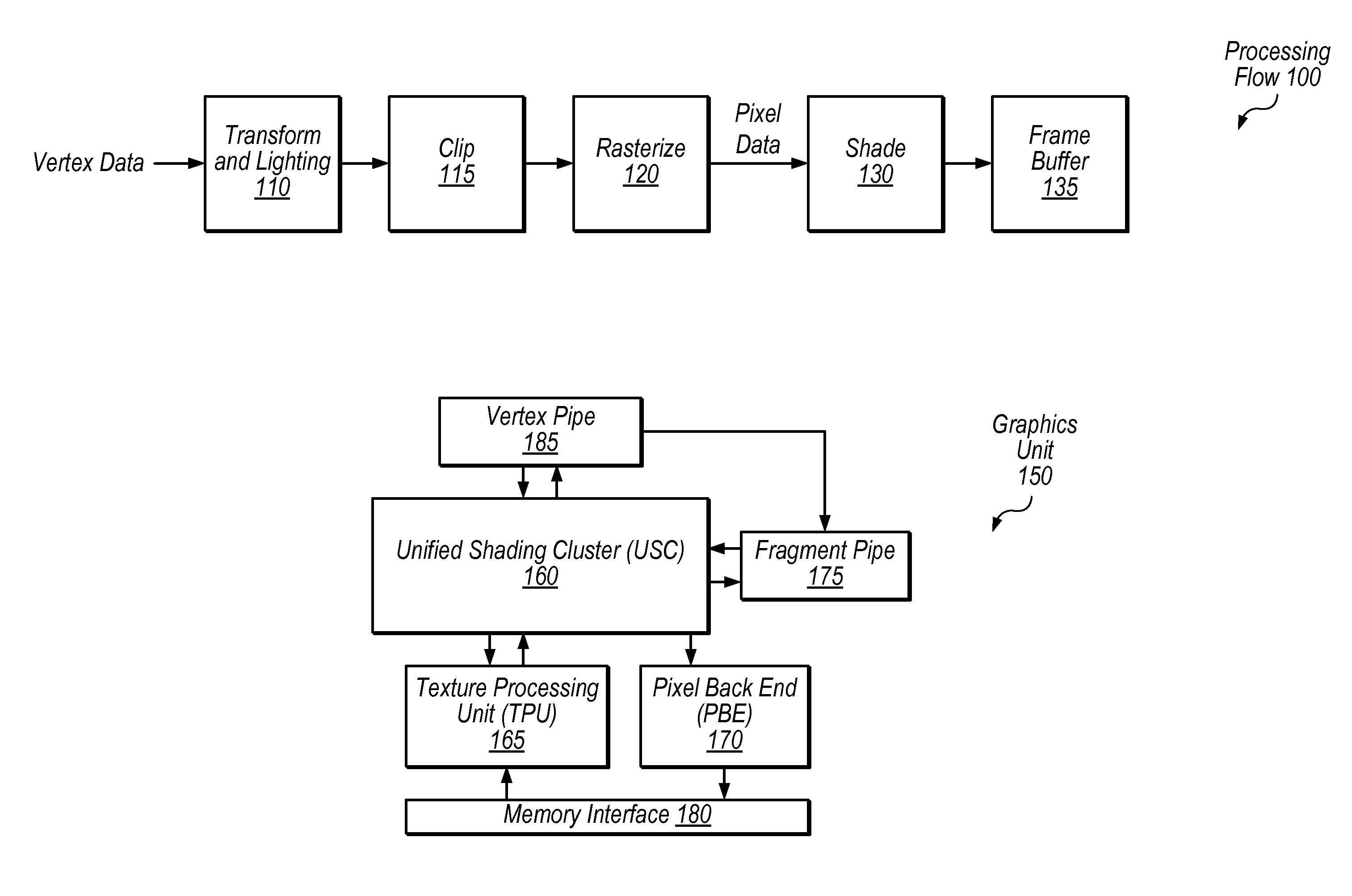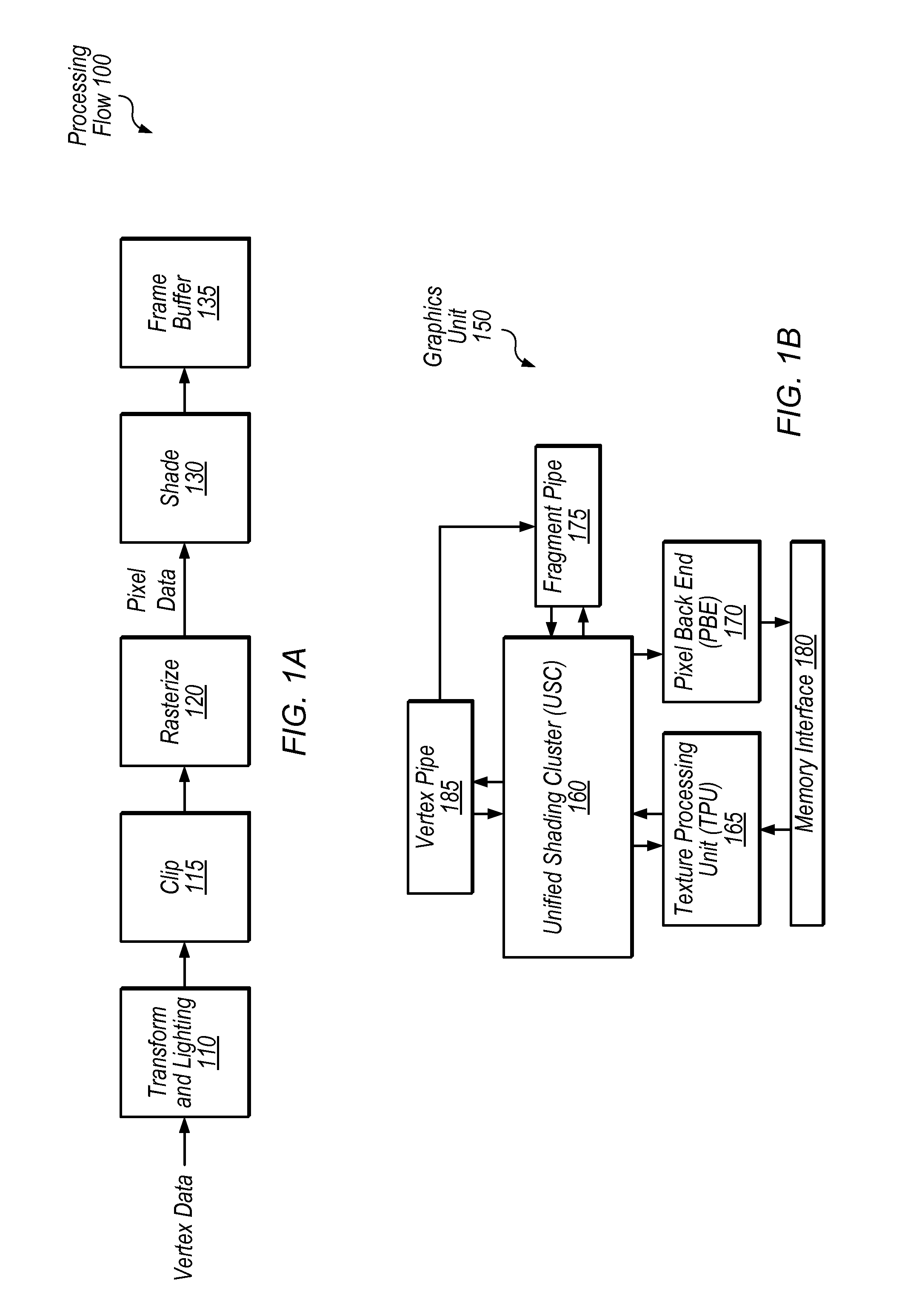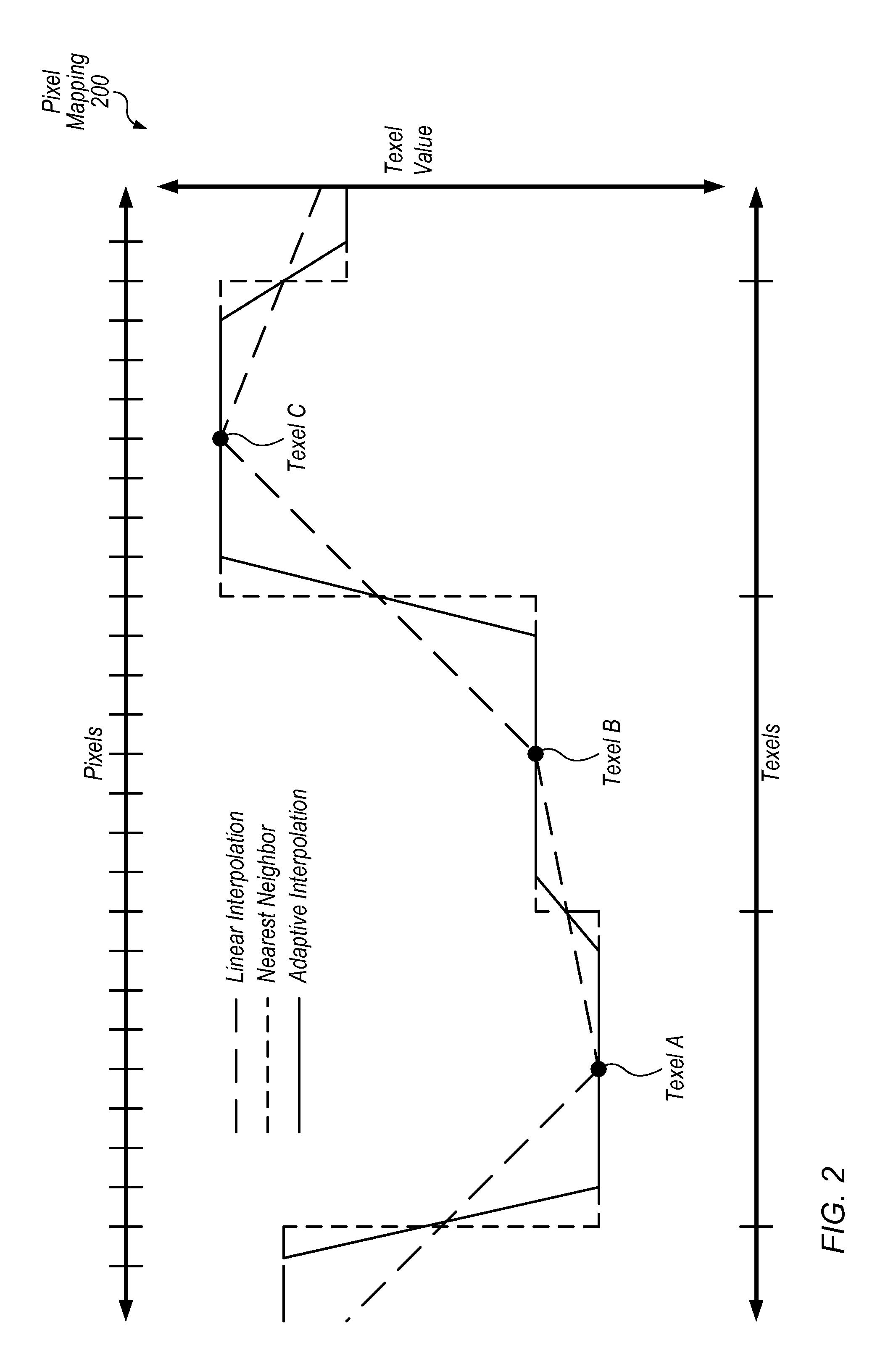Interpolation circuitry and techniques for graphics processing
a technology of interpolation circuit and graphics processing, applied in the field of graphics processing, can solve problems such as undesirable visual artifacts (often referred to as aliasing) at the boundary between texels
- Summary
- Abstract
- Description
- Claims
- Application Information
AI Technical Summary
Benefits of technology
Problems solved by technology
Method used
Image
Examples
Embodiment Construction
[0021]This disclosure initially describes, with reference to FIGS. 1A-1B, an overview of a graphics processing flow and an exemplary graphics unit. Embodiments of adaptive interpolation techniques are described with reference to FIGS. 2-5. Embodiments of texel smoothing group techniques are described with reference to FIG. 6. Exemplary methods and an exemplary device are described with reference to FIGS. 7-8. In some embodiments, the disclosed techniques may reduce aliasing at boundaries between texels in a magnified texture while producing a desired visual effect.
Graphics Processing Overview
[0022]Referring to FIG. 1A, a flow diagram illustrating an exemplary processing flow 100 for processing graphics data is shown. In one embodiment, transform and lighting step 110 may involve processing lighting information for vertices received from an application based on defined light source locations, reflectance, etc., assembling the vertices into polygons (e.g., triangles), and / or transform...
PUM
 Login to View More
Login to View More Abstract
Description
Claims
Application Information
 Login to View More
Login to View More - R&D
- Intellectual Property
- Life Sciences
- Materials
- Tech Scout
- Unparalleled Data Quality
- Higher Quality Content
- 60% Fewer Hallucinations
Browse by: Latest US Patents, China's latest patents, Technical Efficacy Thesaurus, Application Domain, Technology Topic, Popular Technical Reports.
© 2025 PatSnap. All rights reserved.Legal|Privacy policy|Modern Slavery Act Transparency Statement|Sitemap|About US| Contact US: help@patsnap.com



